Abstract
1. ZENECA ZD7288 (4-(N-ethyl-N-phenylamino)-1,2-dimethyl-6-(methylamino) pyrimidinium chloride, formerly ICI D7288) is a novel sino-atrial node function modulator which selectively slows heart rate. 2. The haemodynamic effects of ZD7288 (0.1, 0.3 and 1.0 mg kg-1, i.v.) have been evaluated and compared with those of placebo (physiological saline), zatebradine (ULFS 49, 0.1, 0.3 and 1.0 mg kg-1, i.v.) and propanolol (0.03, 0.1, and 0.3 mg kg-1, i.v.) in beagles chronically instrumented for measurement of heart rate, aortic pressure, aortic flow and dPLV/dtmax. The dogs were trained to run at 6.5 k h-1 on a level treadmill for 5 min at half hourly intervals over a period of 4 h. Drugs were dosed cumulatively after the second, fourth and sixth exercise periods. 3. Control experiments demonstrated a degree of accommodation to repeated exercise over a period of 4 h. Resting heart rate decreased by 21 beats min-1, but heart rate response to exercise was maintained, whereas dPLV/dtmax at rest remained steady while the response to exercise decreased significantly (by 25% after 2 h, P < 0.05). 4. ZD7288 and zatebradine both decreased heart rate during exercise in a dose-dependent manner, whilst heart rate at rest did not differ from resting heart rates in saline dosed control animals. In contrast, heart rate at rest and during exercise were lowered equally by the lowest doses of propranolol (approximately by 30 beats min-1), and additional doses caused only minor additional decreases.(ABSTRACT TRUNCATED AT 250 WORDS)
Full text
PDF
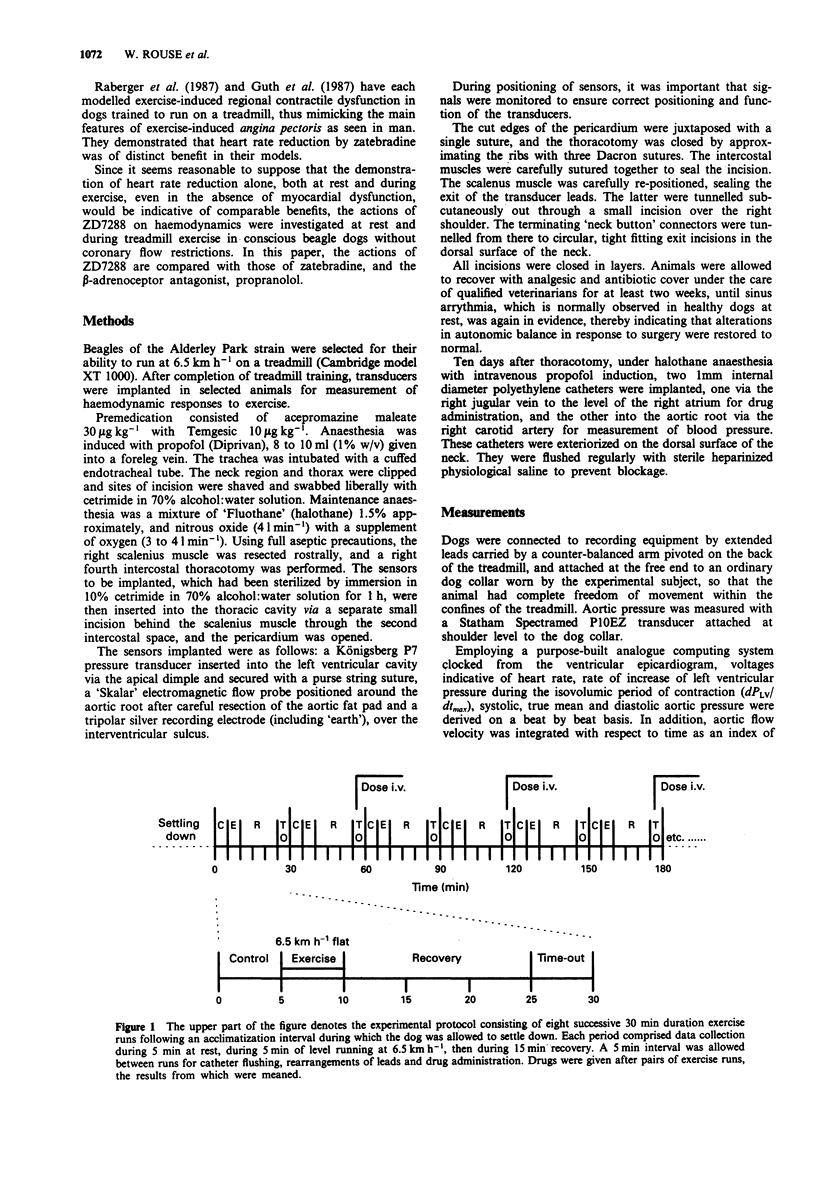
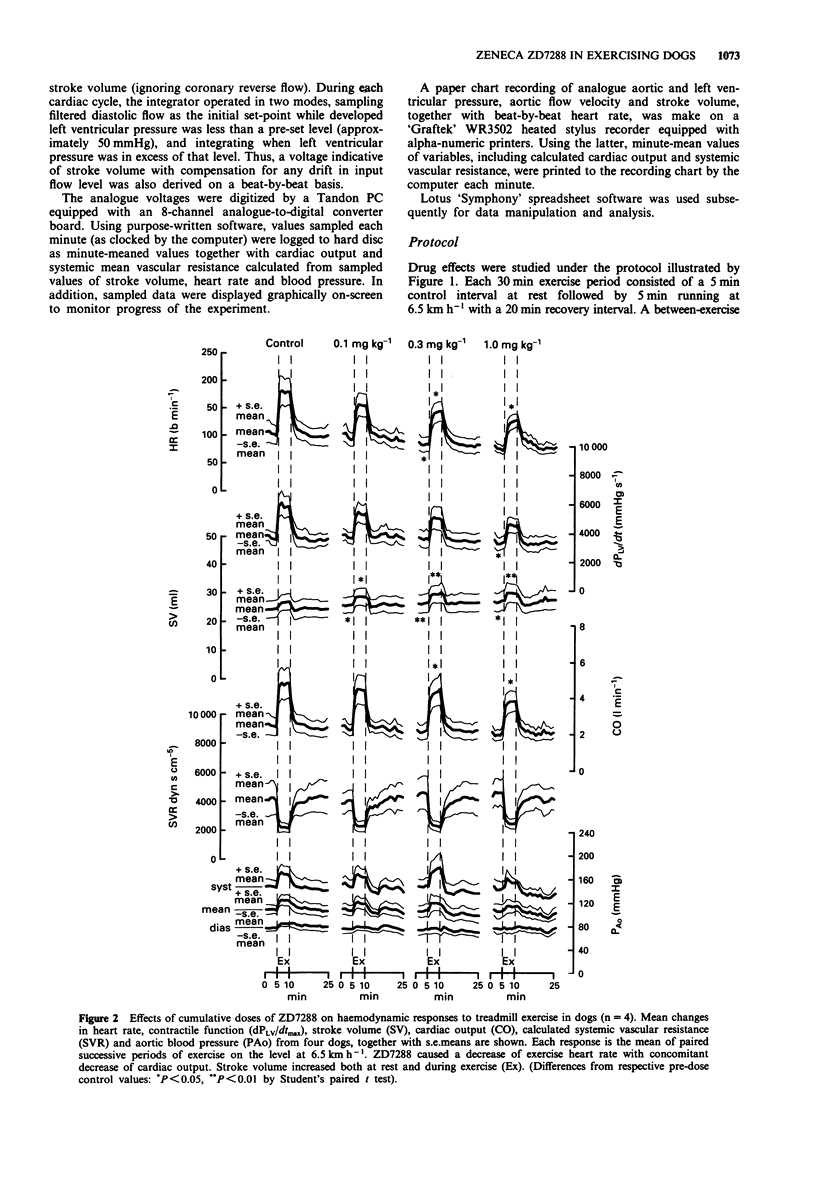
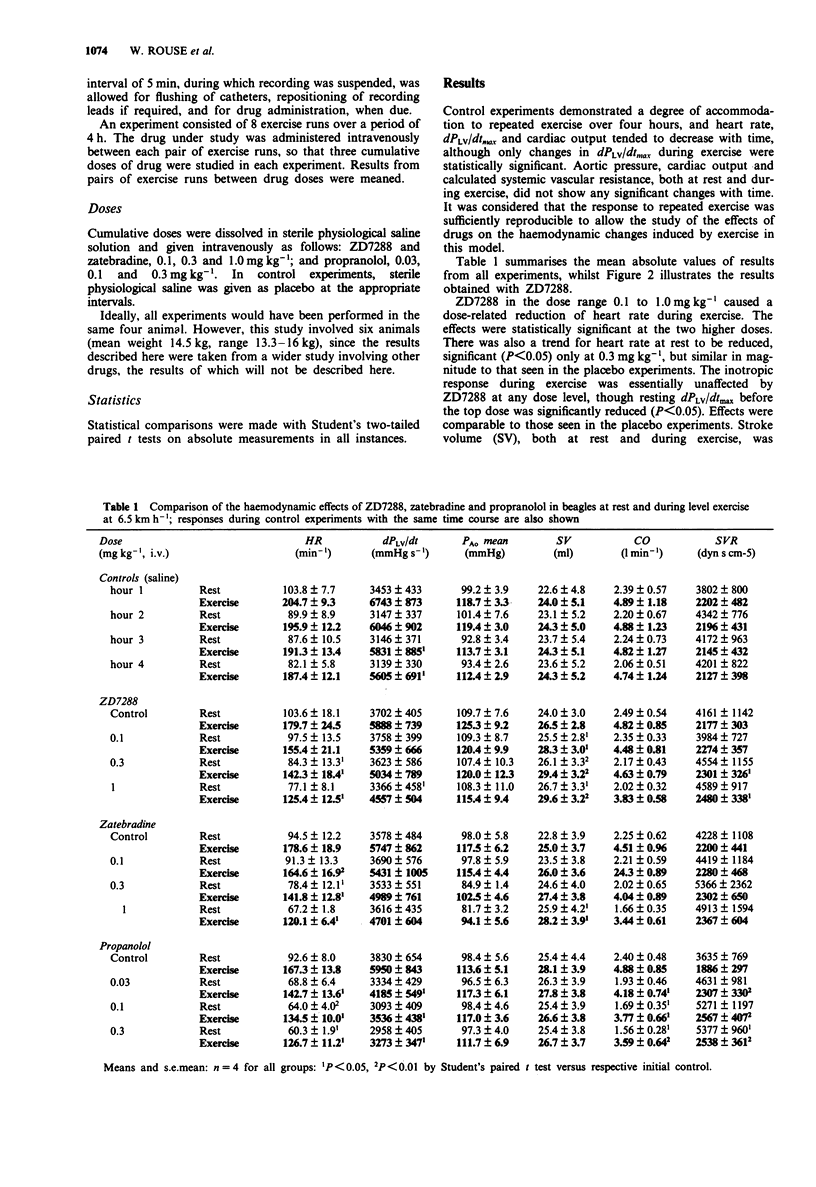
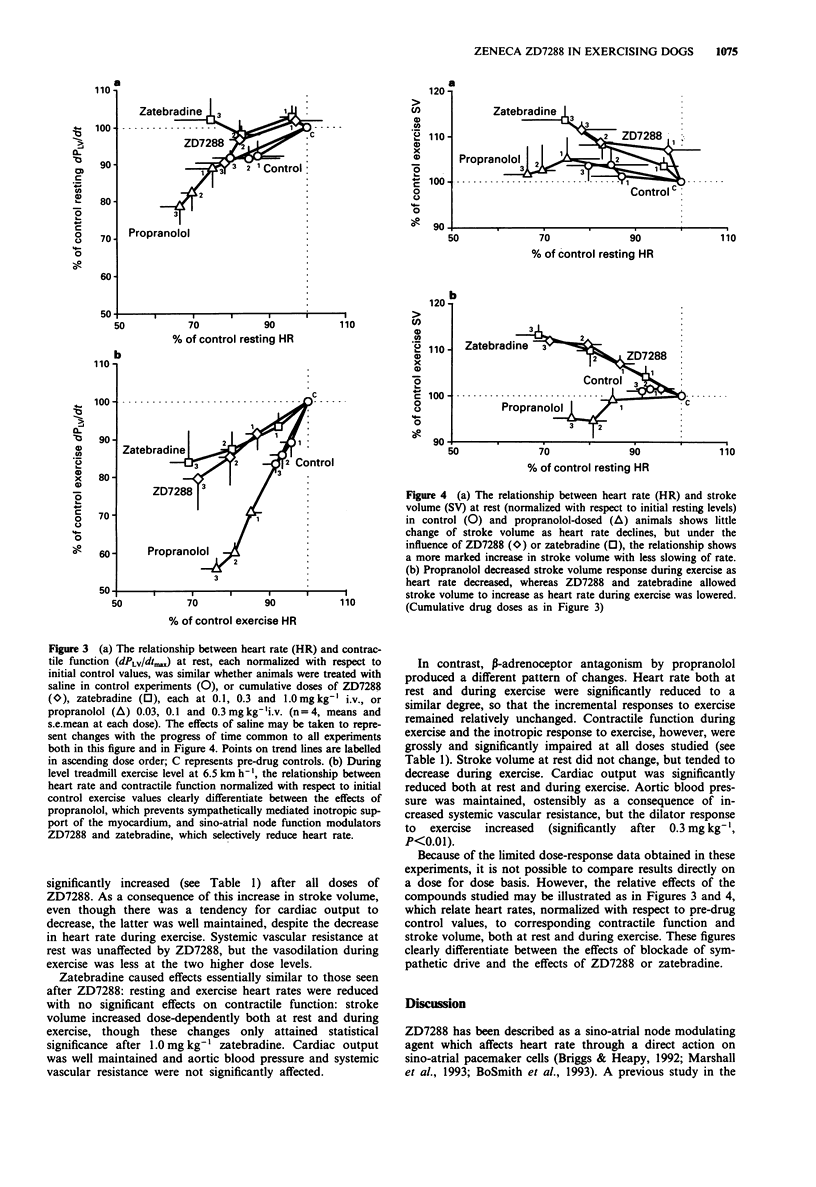
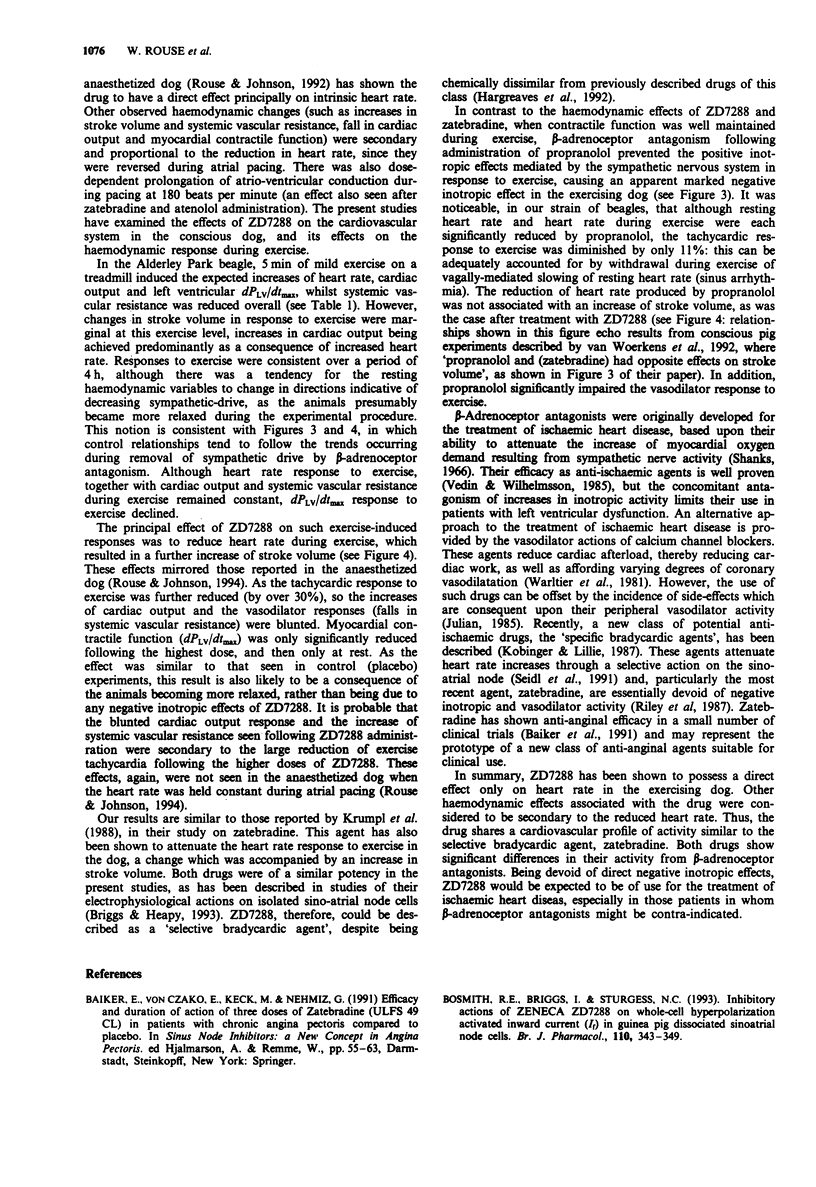
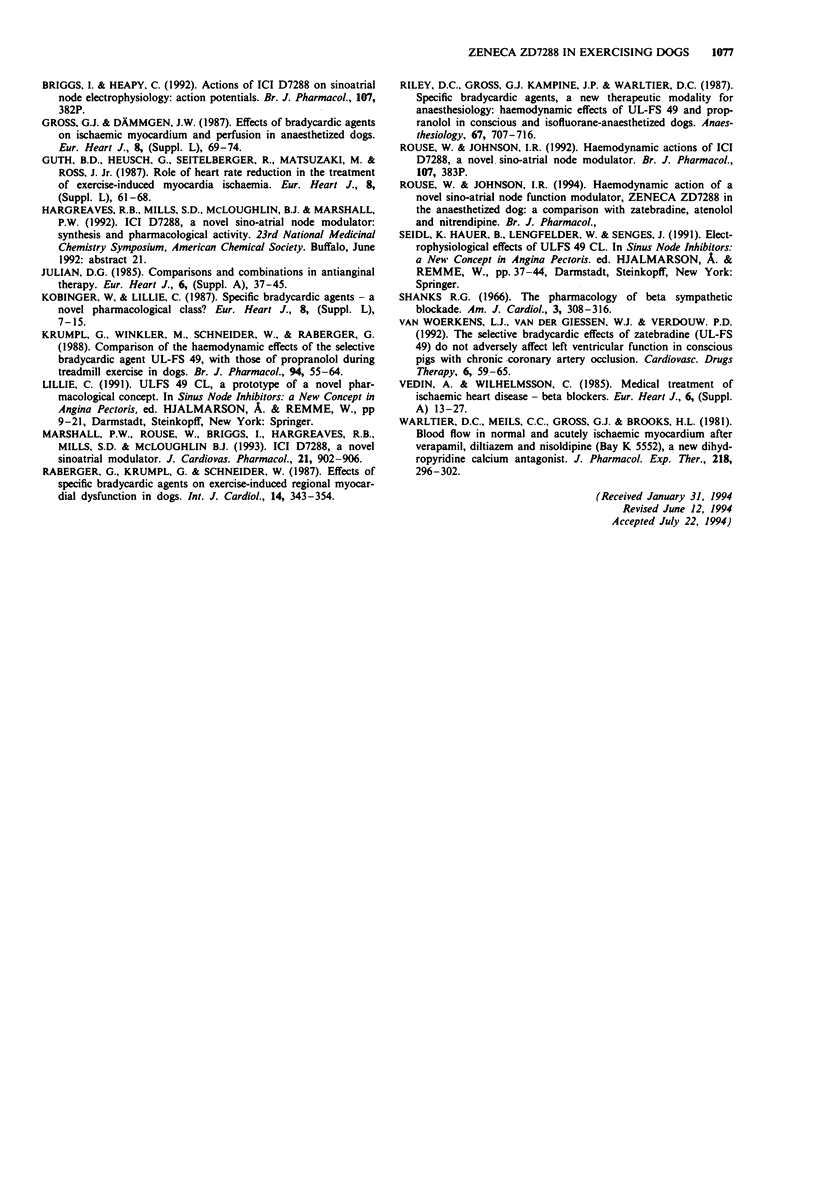
Selected References
These references are in PubMed. This may not be the complete list of references from this article.
- BoSmith R. E., Briggs I., Sturgess N. C. Inhibitory actions of ZENECA ZD7288 on whole-cell hyperpolarization activated inward current (If) in guinea-pig dissociated sinoatrial node cells. Br J Pharmacol. 1993 Sep;110(1):343–349. doi: 10.1111/j.1476-5381.1993.tb13815.x. [DOI] [PMC free article] [PubMed] [Google Scholar]
- Gross G. J., Daemmgen J. W. Effects of bradycardic agents on ischaemic myocardium and perfusion in anesthetized dogs. Eur Heart J. 1987 Dec;8 (Suppl 50):69–74. doi: 10.1093/eurheartj/8.suppl_l.69. [DOI] [PubMed] [Google Scholar]
- Guth B. D., Heusch G., Seitelberger R., Matsuzaki M., Ross J., Jr Role of heart rate reduction in the treatment of exercise-induced myocardial ischaemia. Eur Heart J. 1987 Dec;8 (Suppl 50):61–68. doi: 10.1093/eurheartj/8.suppl_l.61. [DOI] [PubMed] [Google Scholar]
- Kobinger W., Lillie C. Specific bradycardic agents--a novel pharmacological class? Eur Heart J. 1987 Dec;8 (Suppl 50):7–15. doi: 10.1093/eurheartj/8.suppl_l.7. [DOI] [PubMed] [Google Scholar]
- Krumpl G., Winkler M., Schneider W., Raberger G. Comparison of the haemodynamic effects of the selective bradycardic agent UL-FS 49, with those of propranolol during treadmill exercise in dogs. Br J Pharmacol. 1988 May;94(1):55–64. doi: 10.1111/j.1476-5381.1988.tb11499.x. [DOI] [PMC free article] [PubMed] [Google Scholar]
- Marshall P. W., Rouse W., Briggs I., Hargreaves R. B., Mills S. D., McLoughlin B. J. ICI D7288, a novel sinoatrial node modulator. J Cardiovasc Pharmacol. 1993 Jun;21(6):902–906. doi: 10.1097/00005344-199306000-00008. [DOI] [PubMed] [Google Scholar]
- Nagao T., Illiano S., Vanhoutte P. M. Calmodulin antagonists inhibit endothelium-dependent hyperpolarization in the canine coronary artery. Br J Pharmacol. 1992 Oct;107(2):382–386. doi: 10.1111/j.1476-5381.1992.tb12755.x. [DOI] [PMC free article] [PubMed] [Google Scholar]
- Raberger G., Krumpl G., Schneider W. Effects of the bradycardic agent UL-FS 49 on exercise-induced regional contractile dysfunction in dogs. Int J Cardiol. 1987 Mar;14(3):343–354. doi: 10.1016/0167-5273(87)90205-1. [DOI] [PubMed] [Google Scholar]
- Riley D. C., Gross G. J., Kampine J. P., Warltier D. C. Specific bradycardic agents, a new therapeutic modality for anesthesiology: hemodynamic effects of UL-FS 49 and propranolol in conscious and isoflurane-anesthetized dogs. Anesthesiology. 1987 Nov;67(5):707–716. [PubMed] [Google Scholar]
- Shanks R. G. The pharmacology of beta sympathetic blockade. Am J Cardiol. 1966 Sep;18(3):308–316. doi: 10.1016/0002-9149(66)90047-6. [DOI] [PubMed] [Google Scholar]
- Warltier D. C., Meils C. M., Gross G. J., Brooks H. L. Blood flow in normal and acutely ischemic myocardium after verapamil, diltiazem and nisoldipine (Bay k 5552), a new dihydropyridine calcium antagonist. J Pharmacol Exp Ther. 1981 Jul;218(1):296–302. [PubMed] [Google Scholar]
- van Woerkens L. J., van der Giessen W. J., Verdouw P. D. The selective bradycardic effects of zatebradine (UL-FS 49) do not adversely affect left ventricular function in conscious pigs with chronic coronary artery occlusion. Cardiovasc Drugs Ther. 1992 Feb;6(1):59–65. doi: 10.1007/BF00050918. [DOI] [PubMed] [Google Scholar]


